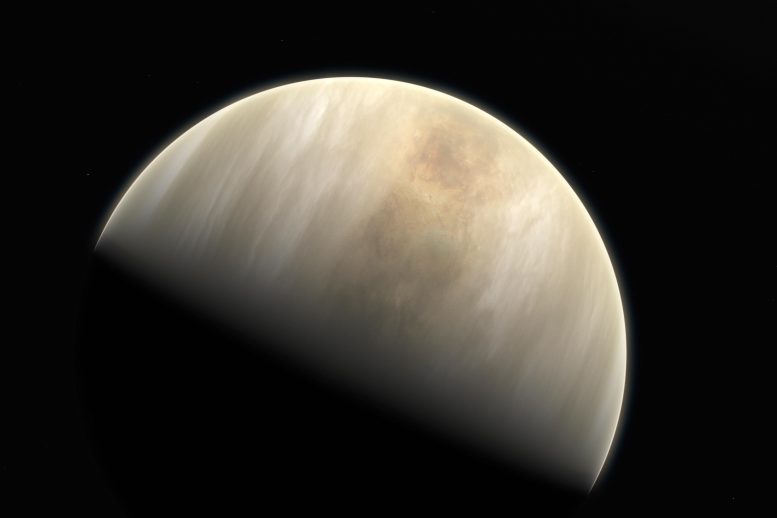
This artistic impression depicts our Solar System neighbor Venus, where scientists have confirmed the detection of phosphine molecules. The molecules were detected in the Venusian high clouds in data from the James Clerk Maxwell Telescope and the Atacama Large Millimeter/submillimeter Array, in which ESO is a partner.
Astronomers have speculated for decades that life could exist in Venus’s high clouds. The detection of phosphine could point to such extra-terrestrial “aerial” life. Credit: ESO/M. Kornmesser & NASA/JPL/Caltech
Update (January 28, 2021): New research indicates it was ordinary sulfur dioxide that was detected, rather than phosphine.
An international team of astronomers recently announced the discovery of a rare molecule — phosphine — in the clouds of Venus. On Earth, this gas is only made industrially or by microbes that thrive in oxygen-free environments. Astronomers have speculated for decades that high clouds on Venus could offer a home for microbes — floating free of the scorching surface but needing to tolerate very high acidity. The detection of phosphine could point to such extra-terrestrial “aerial” life.
“When we got the first hints of phosphine in Venus’s spectrum, it was a shock!” says team leader Jane Greaves of Cardiff University in the UK, who first spotted signs of phosphine in observations from the James Clerk Maxwell Telescope (JCMT), operated by the East Asian Observatory, in Hawaii. Confirming their discovery required using 45 antennas of the Atacama Large Millimeter/submillimeter Array (ALMA) in Chile, a more sensitive telescope in which the European Southern Observatory (ESO) is a partner. Both facilities observed Venus at a wavelength of about 1 millimeter, much longer than the human eye can see — only telescopes at high altitude can detect it effectively.
On September 14, 2020, an international team of astronomers announced the discovery of a rare molecule — phosphine — in the clouds of Venus. This detection could point to extra-terrestrial “aerial” life in the Venusian atmosphere. Watch our summary of the discovery. Credit: ESO
The international team, which includes researchers from the UK, US, and Japan, estimates that phosphine exists in Venus’s clouds at a small concentration, only about twenty molecules in every billion. Following their observations, they ran calculations to see whether these amounts could come from natural non-biological processes on the planet. Some ideas included sunlight, minerals blown upwards from the surface, volcanoes, or lightning, but none of these could make anywhere near enough of it. These non-biological sources were found to make at most one ten-thousandth of the amount of phosphine that the telescopes saw.
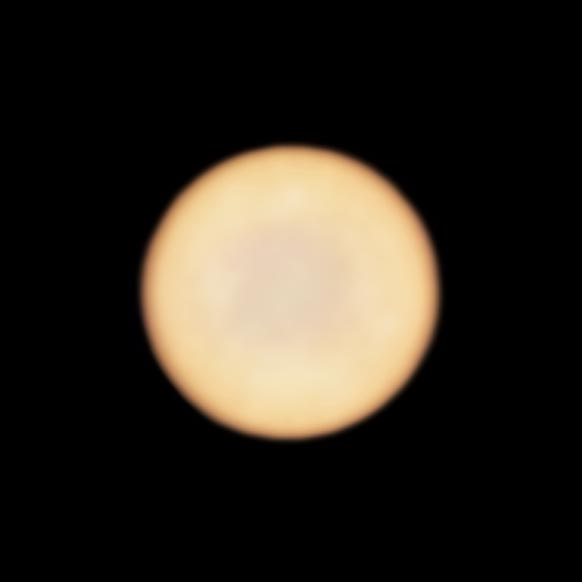
This new image from ALMA, the Atacama Large Millimeter/submillimeter Array in which ESO is a partner, shows planet Venus. Rather than a real feature on the planet, the patchiness of the disc may be due to the response of the interferometer to the very bright emission from Venus, which makes it hard to sample the largest scales accurately. Credit: ALMA (ESO/NAOJ/NRAO), Greaves et al.
To create the observed quantity of phosphine (which consists of hydrogen and phosphorus) on Venus, terrestrial organisms would only need to work at about 10% of their maximum productivity, according to the team. Earth bacteria are known to make phosphine: they take up phosphate from minerals or biological material, add hydrogen, and ultimately expel phosphine. Any organisms on Venus will probably be very different from their Earth cousins, but they too could be the source of phosphine in the atmosphere.
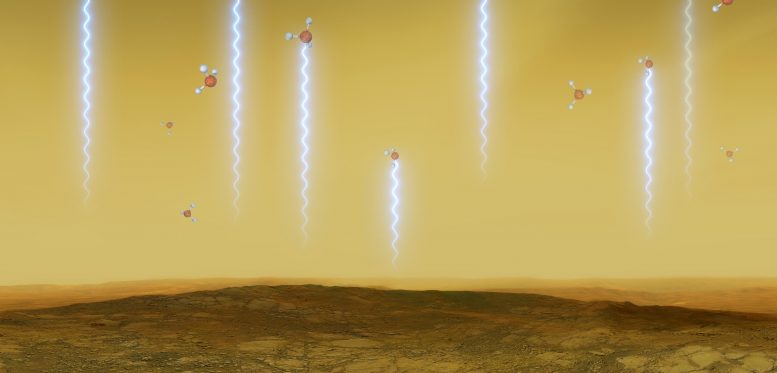
This artistic illustration depicts the Venusian surface and atmosphere, as well as phosphine molecules. These molecules float in the windblown clouds of Venus at altitudes of 55 to 80km, absorbing some of the millimeter waves that are produced at lower altitudes. They were detected in Venus’s high clouds in data from the James Clerk Maxwell Telescope and the Atacama Large Millimeter/submillimeter Array, in which ESO is a partner. Credit: ESO/M. Kornmesser/L. Calçada
While the discovery of phosphine in Venus’s clouds came as a surprise, the researchers are confident in their detection. “To our great relief, the conditions were good at ALMA for follow-up observations while Venus was at a suitable angle to Earth. Processing the data was tricky, though, as ALMA isn’t usually looking for very subtle effects in very bright objects like Venus,” says team member Anita Richards of the UK ALMA Regional Centre and the University of Manchester. “In the end, we found that both observatories had seen the same thing — faint absorption at the right wavelength to be phosphine gas, where the molecules are backlit by the warmer clouds below,” adds Greaves, who led the study published today in Nature Astronomy.
Another team member, Clara Sousa Silva of the Massachusetts Institute of Technology in the US, has investigated phosphine as a “biosignature” gas of non-oxygen-using life on planets around other stars, because normal chemistry makes so little of it. She comments: “Finding phosphine on Venus was an unexpected bonus! The discovery raises many questions, such as how any organisms could survive. On Earth, some microbes can cope with up to about 5% of acid in their environment — but the clouds of Venus are almost entirely made of acid.”
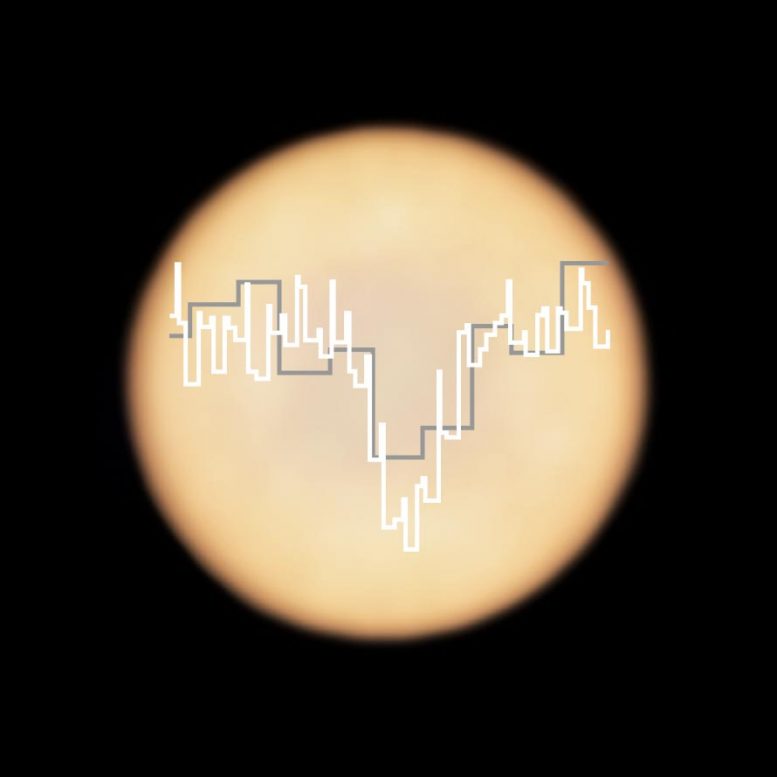
This artistic representation shows a real image of Venus, taken with ALMA, in which ESO is a partner, with two superimposed spectra taken with ALMA (in white) and the James Clerk Maxwell Telescope (JCMT; in grey). The dip in Venus’s JCMT spectrum provided the first hint of the presence of phosphine on the planet, while the more detailed spectrum from ALMA confirmed that this possible marker of life really is present in the Venusian atmosphere. As molecules of phosphine float in the high clouds of Venus, they absorb some of the millimeter waves that are produced at lower altitudes. When observing the planet in the millimeter wavelength range, astronomers can pick up this phosphine absorption signature in their data, as a dip in the light from the planet. Credit: ALMA (ESO/NAOJ/NRAO), Greaves et al. & JCMT (East Asian Observatory)
The team believes their discovery is significant because they can rule out many alternative ways to make phosphine, but they acknowledge that confirming the presence of “life” needs a lot more work. Although the high clouds of Venus have temperatures up to a pleasant 30 degrees Celsius, they are incredibly acidic — around 90% sulphuric acid — posing major issues for any microbes trying to survive there.
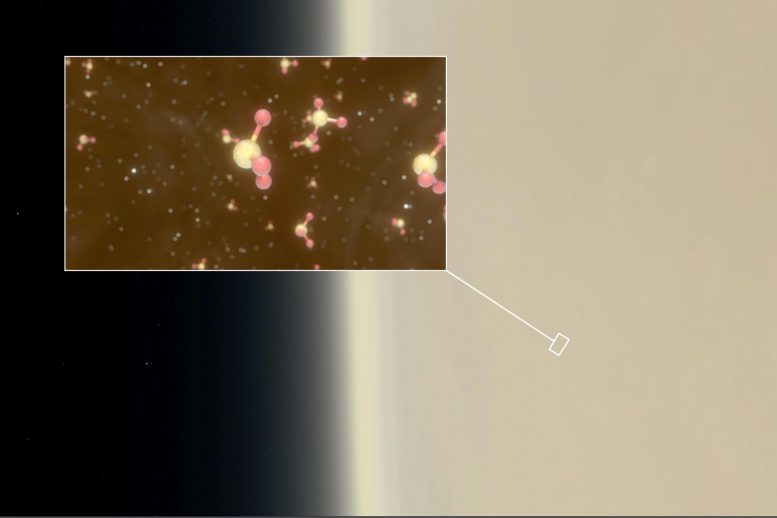
This artistic impression depicts our Solar System neighbor Venus, where scientists have confirmed the detection of phosphine molecules, a representation of which is shown in the inset. The molecules were detected in the Venusian high clouds in data from the James Clerk Maxwell Telescope and the Atacama Large Millimeter/submillimeter Array, in which ESO is a partner. Astronomers have speculated for decades that life could exist in Venus’s high clouds. The detection of phosphine could point to such extra-terrestrial “aerial” life. Credit: ESO/M. Kornmesser/L. Calçada & NASA/JPL/Caltech
ESO astronomer and ALMA European Operations Manager Leonardo Testi, who did not participate in the new study, says: “The non-biological production of phosphine on Venus is excluded by our current understanding of phosphine chemistry in rocky planets’ atmospheres. Confirming the existence of life on Venus’s atmosphere would be a major breakthrough for astrobiology; thus, it is essential to follow-up on this exciting result with theoretical and observational studies to exclude the possibility that phosphine on rocky planets may also have a chemical origin different than on Earth.”
More observations of Venus and of rocky planets outside our Solar System, including with ESO’s forthcoming Extremely Large Telescope, may help gather clues on how phosphine can originate on them and contribute to the search for signs of life beyond Earth.
For more on this discovery on SciTechDaily, see:
- Astronomers Find Possible Signs of Life on Venus
- Why Scientists Believe There May Be Extra-Terrestrial Life Floating in the Atmosphere of Venus
More information
This research was presented in the paper “Phosphine Gas in the Cloud Decks of Venus” published in Nature Astronomy.
The team is composed of Jane S. Greaves (School of Physics & Astronomy, Cardiff University, UK [Cardiff]), Anita M. S. Richards (Jodrell Bank Centre for Astrophysics, The University of Manchester, UK), William Bains (Department of Earth, Atmospheric, and Planetary Sciences, Massachusetts Institute of Technology, USA [MIT]), Paul Rimmer (Department of Earth Sciences and Cavendish Astrophysics, University of Cambridge and MRC Laboratory of Molecular Biology, Cambridge, UK), Hideo Sagawa (Department of Astrophysics and Atmospheric Science, Kyoto Sangyo University, Japan), David L. Clements (Department of Physics, Imperial College London, UK [Imperial]), Sara Seager (MIT), Janusz J. Petkowski (MIT), Clara Sousa-Silva (MIT), Sukrit Ranjan (MIT), Emily Drabek-Maunder (Cardiff and Royal Observatory Greenwich, London, UK), Helen J. Fraser (School of Physical Sciences, The Open University, Milton Keynes, UK), Annabel Cartwright (Cardiff), Ingo Mueller-Wodarg (Imperial), Zhuchang Zhan (MIT), Per Friberg (EAO/JCMT), Iain Coulson (EAO/JCMT), E’lisa Lee (EAO/JCMT) and Jim Hoge (EAO/JCMT).
An accompanying paper by some of team members, titled “The Venusian Lower Atmosphere Haze as a Depot for Desiccated Microbial Life: A Proposed Life Cycle for Persistence of the Venusian Aerial Biosphere,” was published in Astrobiology in August 2020. Another related study by some of the same authors, “Phosphine as a Biosignature Gas in Exoplanet Atmospheres,” was published in Astrobiology in January 2020.
References:
“Phosphine gas in the cloud decks of Venus” by Jane S. Greaves, Anita M. S. Richards, William Bains, Paul B. Rimmer, Hideo Sagawa, David L. Clements, Sara Seager, Janusz J. Petkowski, Clara Sousa-Silva, Sukrit Ranjan, Emily Drabek-Maunder, Helen J. Fraser, Annabel Cartwright, Ingo Mueller-Wodarg, Zhuchang Zhan, Per Friberg, Iain Coulson, E’lisa Lee and Jim Hoge, 14 September 2020, Nature Astronomy.
DOI: 10.1038/s41550-020-1174-4
“The Venusian Lower Atmosphere Haze as a Depot for Desiccated Microbial Life: A Proposed Life Cycle for Persistence of the Venusian Aerial Biosphere” by Sara Seager, Janusz J. Petkowski, Peter Gao, William Bains, Noelle C. Bryan, Sukrit Ranjan and Jane Greaves, 13 August 2020, Astrobiology.
DOI: 10.1089/ast.2020.2244
“Phosphine as a Biosignature Gas in Exoplanet Atmospheres” by Clara Sousa-Silva, Sara Seager, Sukrit Ranjan, Janusz Jurand Petkowski, Zhuchang Zhan, Renyu Hu and William Bains, 22 November 2019, Astrobiology.
DOI: 10.1089/ast.2018.1954
The European Southern Observatory (ESO) is the foremost intergovernmental astronomy organization in Europe and the world’s most productive ground-based astronomical observatory by far. It has 16 Member States: Austria, Belgium, the Czech Republic, Denmark, France, Finland, Germany, Ireland, Italy, the Netherlands, Poland, Portugal, Spain, Sweden, Switzerland and the United Kingdom, along with the host state of Chile and with Australia as a Strategic Partner. ESO carries out an ambitious program focused on the design, construction, and operation of powerful ground-based observing facilities enabling astronomers to make important scientific discoveries. ESO also plays a leading role in promoting and organizing cooperation in astronomical research. ESO operates three unique world-class observing sites in Chile: La Silla, Paranal, and Chajnantor. At Paranal, ESO operates the Very Large Telescope and its world-leading Very Large Telescope Interferometer as well as two survey telescopes, VISTA working in the infrared and the visible-light VLT Survey Telescope. Also at Paranal ESO will host and operate the Cherenkov Telescope Array South, the world’s largest and most sensitive gamma-ray observatory. ESO is also a major partner in two facilities on Chajnantor, APEX and ALMA, the largest astronomical project in existence. And on Cerro Armazones, close to Paranal, ESO is building the 39-meter Extremely Large Telescope, the ELT, which will become “the world’s biggest eye on the sky.”
The Atacama Large Millimeter/submillimeter Array (ALMA), an international astronomy facility, is a partnership of ESO, the U.S. National Science Foundation (NSF), and the National Institutes of Natural Sciences (NINS) of Japan in cooperation with the Republic of Chile. ALMA is funded by ESO on behalf of its Member States, by NSF in cooperation with the National Research Council of Canada (NRC) and the Ministry of Science and Technology (MOST), and by NINS in cooperation with the Academia Sinica (AS) in Taiwan and the Korea Astronomy and Space Science Institute (KASI). ALMA construction and operations are led by ESO on behalf of its Member States; by the National Radio Astronomy Observatory (NRAO), managed by Associated Universities, Inc. (AUI), on behalf of North America; and by the National Astronomical Observatory of Japan (NAOJ) on behalf of East Asia. The Joint ALMA Observatory (JAO) provides the unified leadership and management of the construction, commissioning, and operation of ALMA.
With a diameter of 15m (50 feet) the James Clerk Maxwell Telescope (JCMT) is the largest single-dish astronomical telescope in the world designed specifically to operate in the submillimeter wavelength region of the electromagnetic spectrum. The JCMT is used to study our Solar System, interstellar and circumstellar dust and gas, evolved stars, and distant galaxies. It is situated in the science reserve of Maunakea, Hawaii, at an altitude of 4092m (13 425 feet). The JCMT is operated by the East Asian Observatory on behalf of NAOJ; ASIAA; KASI; CAMS as well as the National Key R&D Program of China. Additional funding support is provided by the STFC and participating universities in the UK and Canada.

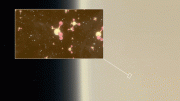

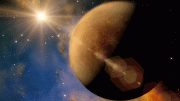
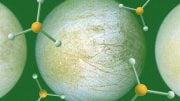
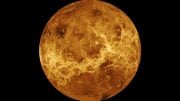

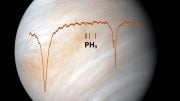

Good share. Thanks
Why are people so insistent that Venus can support life? Like, it can support very different life than us. We can’t go to Venus.
Just because Venus was named after a woman and Mars was named after a man, doesn’t mean there’s anything going on.
One should not draw conclusions without evidence.
Amazing to me that this could be a sign of life yet dividing cells in a human are not and abortion is ok because its not life😔
You misunderstand, probably because coherent thought isn’t a strength for you. I’ll attempt to clarify: the pro choice spectrum does not claim an embryo is not alive, we state it is not capable of surviving on its own. Very important difference. A parallel would be tapeworms: if you contract tapeworms through your own action (eating without protection such as proper cooking), are you obligated to allow that parasite to fulfill that portion of its life cycle inside of you (at your expense) or do you have the right to security of your person against unwanted intrusion and therefore to choose to remove it? Now lets use that same logic on your position: if you contract an embryo due to your own action (sex without protection such as a condom) are you obligated to allow that parasite to fulfill that portion of its life cycle inside of you (at your expense) or do you have the right to security of your person against unwanted intrusion and therefore the right to choose to remove it? If it becomes life threatening, does that change your opinion? What would life threatening look like? Would it include depression? I bet I can answer those questions on your behalf and be 100% accurate, as I’ve encountered you people before, but hey, prove me wrong.
Thank you.
Whoever would have thought the first sign of life would be a smell???? Something’s farting way out there in space. It’s hitherto unknown to science, someone’s letting off gas giants. Something’s farting at the human race. But we mustn’t get irate. It might just be how they communicate.
Phosphine cannot be a product of a living organism for the following reasons. 1 No known creature can exist in concentrated Sulphuric acid situations. Way too agressive. 2 If live was by intelligent design there may be a possibility, but a living organism cannot come into existence with out design and engineering. This is the holy grain of evolution and all the evidence points to the fact that it is not only impossible, it is ridiculously impossible. That’s the truth. This is scientists clutching at straws, perhaps for funding. Get over it and move on. If it is clearly impossible on earth, it must be more so on venus.
Wow. Brings to mind a proverb about beginning with certainty..
“No known creature can exist in concentrated Sulphuric (sic) acid situations”. Argument from ignorance fallacy.
“If live (sic) was by intelligent design there may be a possibility, but a living organism cannot come into existence without design and engineering”. An argument posited without evidence must be dismissed without evidence.
“This is the holy grain” (I assume you meant “grail” but hey, you argue other nonsense so I could be wrong) “of evolution and all the evidence points to the fact that it is not only impossible, it is ridiculously impossible”. Again, argument from ignorance fallacy, plus an assertion without evidence (an assertion that is also clearly against every single piece of evidence there is; I refer you to the works of Charles Darwin, Lawrence Krause, and Richard Dawkins), topped with a healthy dose of hyperbole.
“That’s the truth. This is scientists clutching at straws, perhaps for funding”. Another assertion, this time positioned as an argument from authority, compounded by a speculation about other people’s motives that reveals far more about your own biases than it can ever reveal about the subjects of your ridicule. (Have you ever noticed how churches always seem to need more and more money? Weird how their god that turned loaves and fishes into a meal for thousands is such a terrible budgeter)
“Get over it and move on”. Great advice for religious zealots everywhere.
“If it is clearly impossible on earth (sic), it must be more so on venus (sic)”. I’m not sure what you’re claiming is impossible on Earth (Life? Microbial life? Evolution?), but claiming something is clearly impossible without even bothering to test it is foolish at best. To top that hubris off by then extrapolating the argument from ignorance fallacy to another planet you know practically zilch about is simply breathtaking in its foolhardy arrogance. But hey, you do you.
An article titled “What is Phosphine…” etc. should probably say what phosphine is. Instead, its chemical formula appears no where in the text, it is only described, in the fourth paragraph, as consisting of “hydrogen and phosphorus,” and the unlabeled illustrations of the four atom molecule force the reader to infer which atoms are which.
In addition, the pictures are variously described as “artistic impression” and “artistic illustration.” The word “artistic” is a judgement of quality rightly left to for the reader. These should be labeled “artist’s” impressions or illustrations.